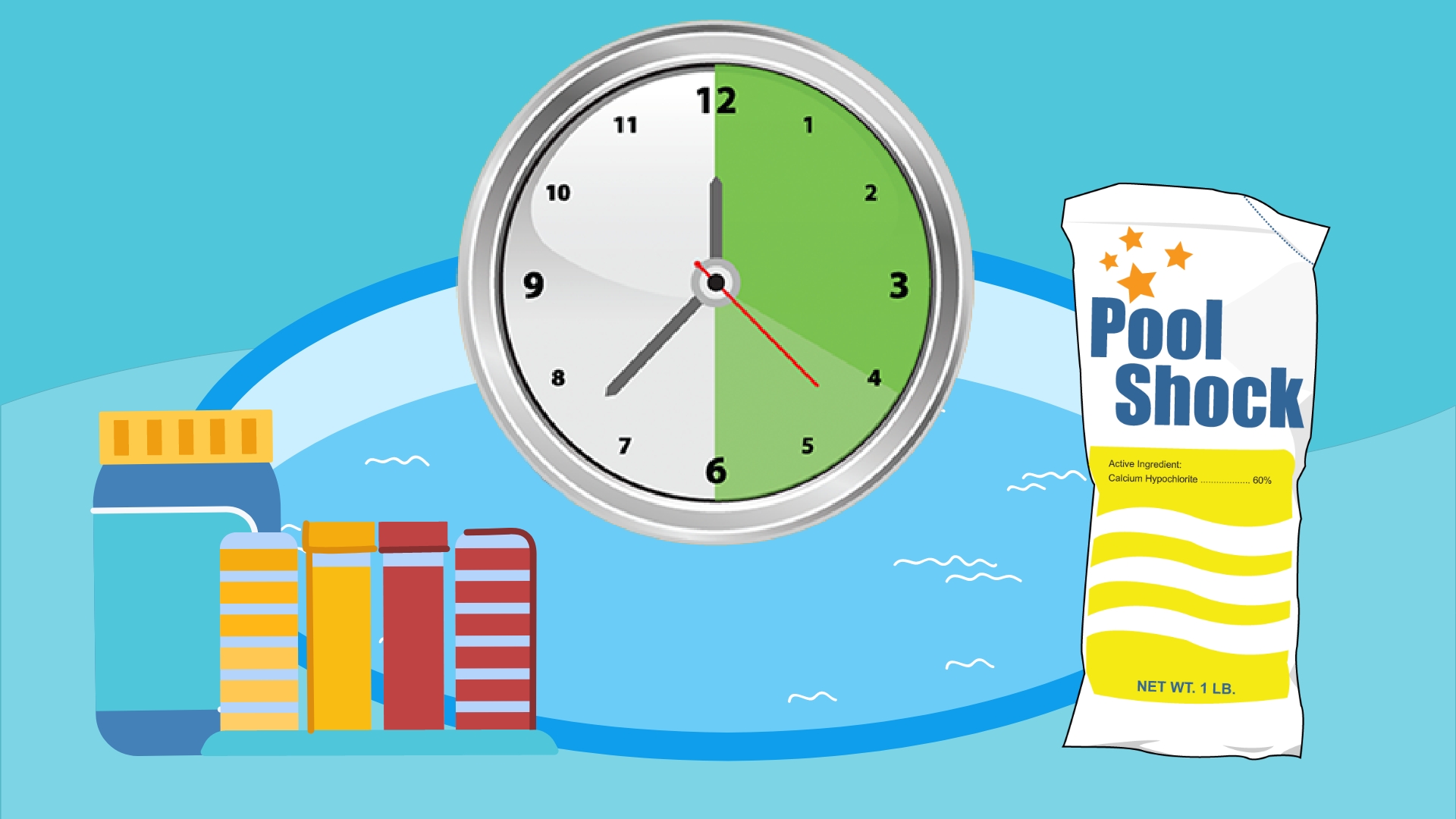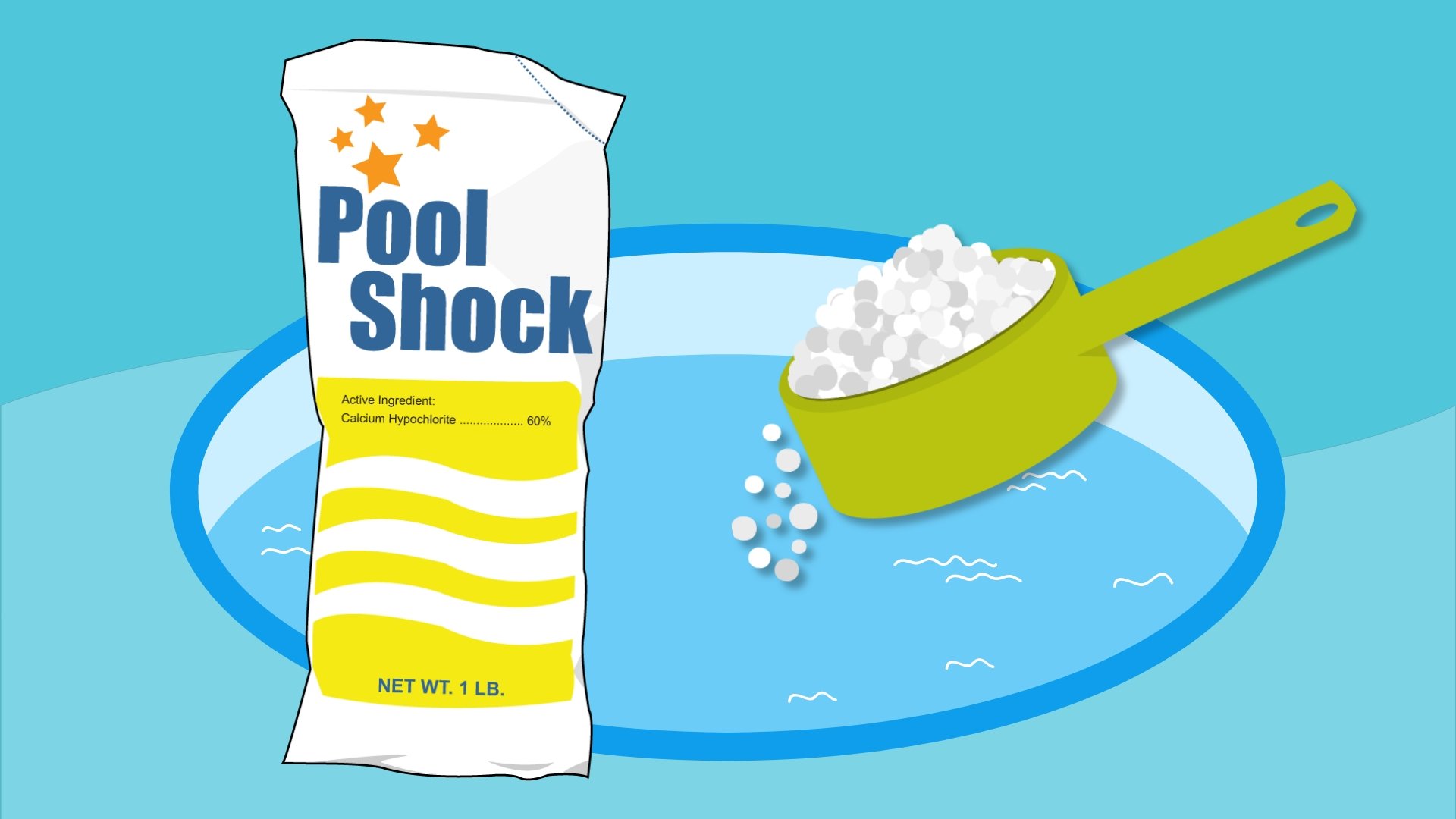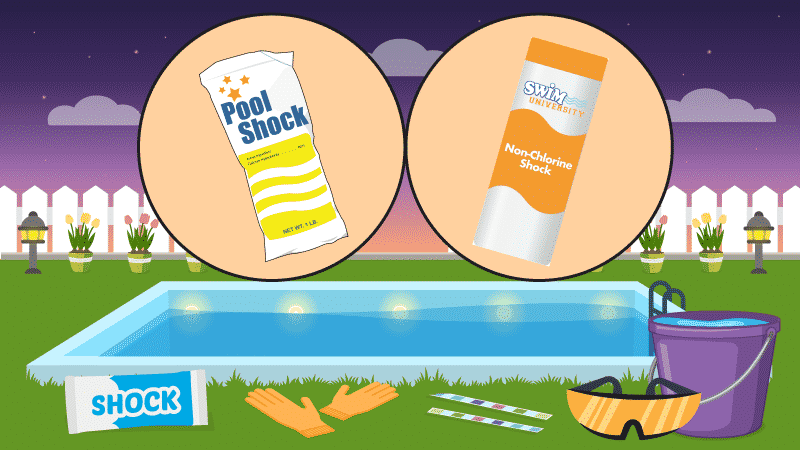Calcium Hypochlorite: The Best Shock For Your Pool
If you’re a hands-on pool owner, you’re used to dealing with various chemicals, from chlorine to your Aunt Edna’s homemade suntan lotion. You might even already use calcium hypochlorite as your pool shock. And if you do, you’re ahead of the game.
You know it’s widely used. You know it’s powerful. But what you might not know is why this powerful chemical makes the best pool shock. So if you’re not using calcium hypochlorite, understanding its origins, function, and best way to use it can help you enjoy a safer and more sanitary swim.
Stop wasting time and money with confusing water chemistry and maintenance. Our effortless system guarantees to keep your pool balanced, sanitized, and crystal clear all year. Works for all pools including saltwater.
What is Calcium Hypochlorite Pool Shock?
As a pool owner, you might know this chemical compound best from the ingredients list on a container of pool shock. But calcium hypochlorite—also known as cal hypo or, in earlier centuries, as chloride of lime—has been used to sanitize water since the middle of the 19th century.
Calcium hypochlorite is created by treating lime (calcium oxide) with chlorine gas. The resulting compound is a very strong base, usually sold as a granulated solid. It’s quite reactive with organic compounds and has a high pH level. It’s also readily available, reasonably priced, and easy to store and use. All of these features make it the ideal choice for shocking your pool.
This fast-acting, quick-dissolving swimming pool shock kills bacteria, controls algae, and destroys organic contaminants in pools.
How Calcium Hypochlorite Works
The disinfecting power of this compound comes from chlorine. Commercially available varieties generally contain 65% to 75% chlorine. It also adds around 0.8 parts per million (ppm) of calcium to your pool water for every 1 ppm of free chlorine (FC), or the chlorine actively available to sanitize your pool, you add. Be sure to plan accordingly if your water already contains a high concentration of calcium.
When calcium hypochlorite encounters microbes and other organic contaminants, the chlorine compounds it contains will disrupt the functions of their cells by bonding with enzymes and other cell components. This will shut down the bacteria by disabling its internal workings or destroy it by rupturing the cell walls, sanitizing your pool water.
When chlorine bonds with organic compounds, it becomes captured chlorine (CC). Your pool’s total chlorine is the sum of its FC and CC.
Just like vampires, Batman, or the guy who keeps stealing your newspaper, calcium hypochlorite does its best work at night.
This is because it contains what’s known as unstabilized chlorine, which (also like vampires) can be burned away by sunlight. Just make sure you add cal hypo to your pool at dusk, and you can wake up to a sanitized pool—no garlic required.
Why Your Pool Needs Calcium Hypochlorite Shock
Your pool needs to be shocked on a regular basis to maintain proper sanitation. Shocking not only boosts sanitizer levels, but can also reactivate the sanitizers already present by destroying chloramines.
These chemical baddies are created when chlorine bonds to organic matter like dead skin, body oils, and leaves. The chlorine is trapped in the bond and can’t do its job effectively. Chloramines are responsible for the gases that create “pool smell” and can irritate your eyes, skin, and lungs.
Chloramines can even cause or aggravate respiratory problems, so giving them the boot is an essential part of keeping your pool, and the people who use it, healthy.
When to Shock Your Pool with Calcium Hypochlorite
Don’t wait for the chloramines to reach gag-inducing levels before you bust out the calcium hypochlorite. A good rule of thumb is to shock your pool at least once a week.
But you might want to shock more often if:
- You’ve recently had a bad storm, with or without wind-blown debris
- Your pool’s seen extra heavy use (like a pool party)
- Your pool’s water level has changed significantly
Someone has confused your swimming pool with the Port-o-San (i.e., bathroom-related mishaps)
Proactive shocking with calcium hypochlorite will help ensure your pool is well-defended against algae, bacteria, and other contaminants. A clean pool is a healthy, happy pool.
Shock the Funky: A Calcium Hypochlorite Checklist
Before you can send in your cal hypo stormtroopers to kick bacterial butt, you’ll need a few essential items.
- calcium hypochlorite
- five-gallon bucket
- wooden stir-stick
- safety goggles
- closed-toe shoes
- chemical-resistant gloves
- long-sleeve shirt and pants (or coveralls)
A Matter of Math
The packaging will likely have a handy guide to tell you how much cal hypo you need to shock your pool properly. But if it doesn’t, or you prefer to crunch the numbers yourself (shoutout to the mathletes in pool town!), you can figure out how much you’ll need in just a few easy steps.
If you’d rather not torture yourself with the math, and prefer to just follow the manufacturer’s instructions, you can skip this part and go straight to shocking your pool.
- Do a round of pool water testing for free chlorine (FC) and total chlorine (TC) with a test kit to figure out how much chlorine is currently bound up as combined chlorine (CC).
- Subtract free chlorine from total chlorine to find the captured chlorine level in ppm: TC (ppm) − FC (ppm) = CC (ppm)
- Multiply the CC level by 10 to get 10CC.
- Subtract FC from the product in Step 2: 10CC − FC = Calcium Hypochlorite Needed (CHN), in ppm
- Consult the packaging to determine how much cal hypo will add 1 ppm of chlorine in 10,000 gallons of water (X).
- Divide your pool volume (V) by 10,000 gallons: V ÷ 10,000 = CHV
- Multiply the amount of shock needed by the divided pool volume and the CC/FC difference: CHN × CHV × X = Total Calcium HypoChlorite Needed CHNOz
- Divide the answer by 16 to determine how many pounds (lbs.) of calcium hypochlorite you need. CHNOz ÷ 16 = CHNlbs
Let’s say (for example) that your 50,000-gallon pool has a TC of 2.5, and an FC of 1.2. The package of calcium hypochlorite says it takes 2 ounces of product to add 1 ppm of chlorine to 10,000 gallons. Armed with this information, you can quickly run the numbers.
Captured chlorine (CC):
2.5 ppm − 1.2 ppm = 1.3 ppm
Cal Hypo needed to add 1 ppm to 10,000 gallons of water (X):
2 oz.
Captured chlorine, times 10 (10CC):
1.3 ppm × 10 = 13 ppm
Captured chlorine minus free chlorine (10CC − FC):
13 ppm − 1.2 ppm = 11.8 ppm
Pool volume (CHV):
50,000 ÷ 10,000 = 5
Using our formula, we see that:
CHN × CHV × X = Total Calcium HypoChlorite Needed CHNOz
11.8 × 5 × 2 = 118 oz.
We can then divide that number by 16 (the number of ounces in a pound), to get:
118 ÷ 16 = 7.4
You’ll need 7.4 pounds of calcium hypochlorite to shock your 50,000-gallon pool.
Shocking Your Pool with Calcium Hypochlorite
Every pool is different, so the exact procedure for using this super-sanitizer will vary depending on pool size and the specific product you use. But cal hypo is easy to use, and it’s hard to go wrong with a straightforward approach.
Note: Always follow the storage and usage directions that accompany cal hypo or any other sanitizer.
To shock your pool with calcium hypochlorite:
- Gather your supplies.
- Put on your safety gear.
- Test your pool water for FC, TC, and CC. If you have hard water, keep a close eye on your calcium levels so you can avoid excess scaling and potential hardware problems.
- Calculate how much calcium hypochlorite to add. You’ll likely find a chart or guide on the package to tell you how much shock to use, but you can also use the amount you calculated if you did the math beforehand.
- Fill your bucket about ¾ of the way with warm water.
- One pound at a time, add the calcium hypochlorite to the bucket. Stir it gently until the sanitizer is completely dissolved.
- Walk around your pool, pouring the mixture into the water slowly and evenly. If you have any granules remaining in the bucket, dunk the bucket into the pool and swish it gently to dissolve them, then continue walking and pouring.
- Plan on staying out of the pool for at least eight hours to avoid irritating your skin and eyes or ruining your swimsuit. Since you’ll be shocking at dusk, this should be pretty easy, but take extra care to keep pets, children, and any freeloading neighbors away while the calcium hypochlorite works its magic.
This fast-acting, quick-dissolving swimming pool shock kills bacteria, controls algae, and destroys organic contaminants in pools.
Get Ready for A Shockingly Sanitary Swimming Pool
Why mess with perfection? The same calcium hypochlorite that sanitized water for war heroes and brings clean drinking water to folks around the world is your pool’s best friend in the war on funk and gunk.
When you take the time to understand its power and use it correctly, shocking your pool with this bacteria buster is an express ticket to swimming satisfaction. Make it a part of your weekly pool care routine, and you’ll spend less time worrying about your pool, and more time enjoying it.
Happy Swimming!
3 Ways We Can Help With Your Pool
- Pool Care Cheat Sheets (Free): Easy-to-use downloadable guides to help you keep track of taking care of your pool this year.
- The Pool Care Handbook: An illustrated guide to DIY pool care, including water chemistry, maintenance, troubleshooting, and more.
- The Pool Care Video Course: You’ll get 30+ step-by-step videos and a downloadable guide with everything you need to know about pool maintenance.










